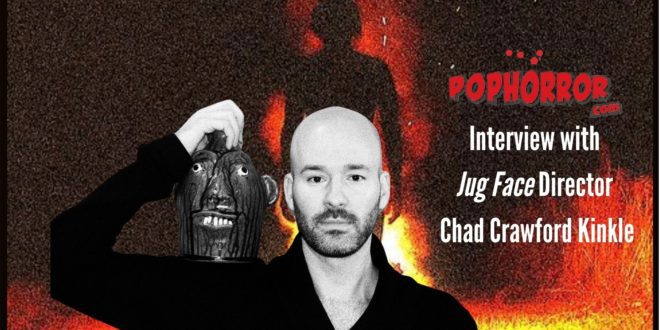When I first stumbled upon the 2013 folklore film, Jug Face, I had no idea what to expect. I had never heard of the filmmaker behind the project, Chad Crawford Kinkle, so I had to go on the synopsis alone:
When she learns the supernatural pit worshipped by her remote community in the woods has demanded her as a blood sacrifice, Ada struggles to find a way to survive, while the pit lashes out in anger.
I had no idea that I was about to experience one of my favorite horror movies ever. The fear is tangible from the beginning, the acting is exceptional, and by the end, the knowledge that there’s no way for anyone to come out ahead in this game leaves you feeling this heavy, almost heartbreaking, dread. So when I heard that he was making another film called Dementer (2012 – read our review here), I immediately hunted it down. While wildly different from Jug Face, Dementer is a twisted, surreal look at the effects of one woman’s time in a cult and how she tries to redeem herself while simultaneously trying to save a woman with Down Syndrome. Both films are outstanding in their own right.
I was thrilled when I was offered the chance to pick the brain of the man behind these two projects.
PopHorror: Thanks so much for taking the time to chat with us, Chad!
Chad Crawford Kinkle: Yeah, no problem!
PopHorror: First, I have to tell you how much I love Jug Face. It’s one of my favorite horror movies ever… and I’ve seen a lot of horror movies.
Chad Crawford Kinkle: Thank you!
PopHorror: Can we start talking about that?
Chad Crawford Kinkle: (laughs) We can talk about whatever you want!
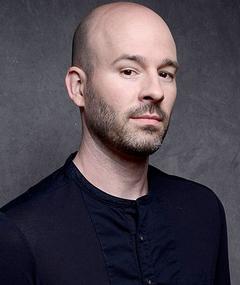
PopHorror: We can? Awesome! So the script for Jug Face is niche in the way that there are so many unique aspects to the film that you don’t see in a lot of genre movies. You’ve got incest; you’ve got monsters that you can’t see; you’ve got backwoods families and ancient traditions. Where did the idea for this story come from?
Chad Crawford Kinkle: I had gone to this new pottery museum opening up around my wife’s aunt and uncle. It was this million dollar facility opening up in the middle of nowhere in the north Georgia mountains. We had to go check it out. That was where I saw a face jug for the first time. These are a folk art tradition in that area. So, I was walking around the exhibit looking at all of the pottery and face jugs. I was also listening to a video on how these jugs are made. Literally, as I was standing there, I just saw in my mind this possessed potter, and he was listening to voices coming out of the pit where he got his clay to make these jugs. The jug that he was making was going to be someone’s face from the community where he was from, and that person had to be sacrificed. The whole movie pretty much came to me as I was standing in this museum.
I’m from the south from a small town in Tennessee, so I’ve grown up with backwoods elements that I almost take for granted to a degree. Things like smaller churches or strange, kind of Christian offsets that do snake handling or they have their hair really long. They do these really weird things. So it came from my experiences growing up in this small town and this element, this face jug, and what I could do with that storywise.
You mention the part about the creature you can’t see. It really worked for the budget that we had, too. It was a device. We didn’t really have the money for a creature… even though we ended up having a creature costume that we shot a little bit of on set that was a last minute thing. But conceptually, it worked. You were seeing the kills Ada’s [Lauren Ashley Carter] eyes. She was being punished. She was having to watch the killings herself of the people in her family and the community because of what she had done. So, it really worked in a story way on one hand, and on the other hand, it worked in the budget way for this type of movie.
I wrote it thinking I would just be finding local funding and I was going to be making it practically myself, but since the script won Slamdance’s Writing Competition, that opened a lot of doors for me. That’s when I contacted the producer Andrew van den Houten, who ended up producing the movie. So, it got bigger than I had initially set out for it to be.
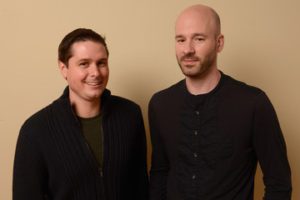
PopHorror: You also worked with Lucky McKee [read the PopHorror interview with him here].
Chad Crawford Kinkle: Yeah, I knew of Lucky McKee beforehand. I was a fan of May [2002] and some of his other works. And he, of course, has worked with Andrew before on The Woman [2011]. I’m not sure at what point Lucky became involved with the script. I guess he read it and thought it was really cool even before Andrew was even signed on to make it. Then he and Andrew watched a short I had just made [Organ Grinder 2011] right after winning the Slamdance award, about two weeks later. I had been preparing for months to make this short. That was one of the main things that made Andrew feel comfortable with me directing the movie. On the day that I sent in the short, Lucky watched it. And they decided together that they were making the movie, that I would direct it, and Lucky is going to be Exec Producer.
I had never really met Lucky, but then he came down a few days before the shoot, and we just hung out in a hotel room and just became really good friends after that. He was there for the first week of shooting. And it was really the most stressful week that you can imagine. When you’re making a film, you’re shooting around actors depending on their availability, and we only had Sean Young for the first week. She’s in all of the big scenes, the emotional scenes. So I was dealing with Sean Young, and I had Lucky sitting in video village watching on the monitors what I was doing. That week was so crazy, that when it ended, I did not remember what had happened. It was just so fast and crazy. Then after that, he wasn’t there, and we finished the movie.
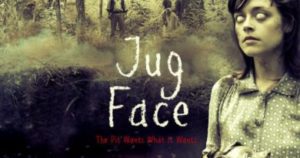
The editor lives in El Paso Texas, and at the time, Lucky was in Oklahoma, so he came down. I would go down there for weeks on end and spend time with the editor on the film. And one of the best weeks of my life was the week that Lucky came down there. We lived in this house that didn’t have cable or internet or anything. We just had a big screen TV and a DVD player. Every night, after editing all day together, we’d go and just watch horror movies together and just drink and hang out. It was the best week ever!
PopHorror: I love that story! That’s awesome! So, to go back to the face jugs, are they created to look like specific people like they are in the movie?
Chad Crawford Kinkle: No. They’re just strange, grotesque faces. The history of them is that they were used to house poisons like arsenic for the boll weevil that would get on cotton. Then they became something to keep moonshine in. Before there was glass jars, there was pottery, and they had to designate pottery that was used for bad things, containers you shouldn’t just drink out of or whatever. That’s the basic history of them.
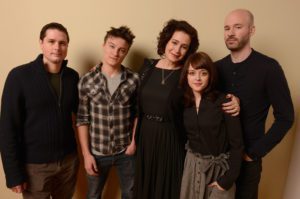
PopHorror: So the jugs already had this dark side to them.
Chad Crawford Kinkle: Yeah. To me, they’re like this reflection of the people, like there must be something more to it that I’ve never seen written about. It’s just a feeling I get. They’re just an expression of something, how they feel about themselves. It’s just weird that they are so grotesque. There’s something behind there that I don’t think anyone has ever delved into to understand what it is, psychologically, the reason behind them. There’s a little bit more than just the practical reason.
PopHorror: Have you ever had the chance to talk to an actual face jug potter?
Chad Crawford Kinkle: Yeah. Oh yeah. When I was writing the screenplay, I read two books on face jugs, the histories of the families, who are all in that area. Mostly. There are some in North Carolina, but they’re mostly in north Georgia.
Actually, Jug Face is actually going to be released on Arrow streaming service this week.
PopHorror: Is it? Nice!
Chad Crawford Kinkle: So I’ve done a couple of extra videos for that release. In one extra video, I walk around my office, and I do a showcase of my face jug collection. I have like 20-something of them. I just started buying them like crazy once I started writing the script. So, I got really familiar with all of the families and their specific styles of the faces that they would do. I actually went to one of the most prominent families in north Georgia, the Metters, and I bought a few jugs and met some of them. There’s also a face jug festival that happens at that museum on Labor Day. So, I’ve met other potters through that as well.
PopHorror: Can you tell who sculpted a face jug when you look at it?
Chad Crawford Kinkle: Oh, yeah, for sure. They’re very recognizable. When I was in England with Jug Face, Frank Henenlotter [Basket Case 1982] was a guest at a festival I went to, and he watched the movie. During the Q&A, he goes, “I have one of those! I was in Georgia at a flea market, and I bought one.” Then later, he sent me a picture of it, and I recognized it immediately. “Oh, that’s a Mary Rogers” (laughs).

PopHorror: We’ve talked a bit about Lucky, and to tie him even more into Jug Face, two of the actors from The Woman, Lauren Ashley Carter [read the PopHorror interview with her here] and Sean Bridgers, were in both films, although they play wildly different characters. In The Woman, Sean plays an abusive misogynist and Lauren is his submissive daughter, and in Jug Face, Lauren is the strong, kickass heroine, Ada, while Sean takes the role of the mentally disabled potter, Dwight. Were they who you saw as actors when you wrote the script for Jug Face?
Chad Crawford Kinkle: When Andrew got the screenplay, he sent it to Sean Bridgers. I think Sean was the first actor to actually read it, and he absolutely loved it. He wanted to either play the father or Dawai. He really sounded like he wanted to play Dawai. I also knew his work from Deadwood where he played a character called Johnny [Burns], a simple-minded guy. So I could see him doing this. Yeah, he would be perfect for Dawai. When we started talking, he told me that he knew people that he had based the character on that he’d grown up with, and that was something that made me realize that he was perfect.
As far as Lauren is concerned, there was really no mention of her when we were thinking about actresses. But I had just watched The Woman. I watched it, and that was when I saw Lauren for the first time. I became fascinated by her face and her large eyes. She has this sort of fairy tale look, and it just seemed like it would translate well onto a face jug.
During the writing, I was actively looking for someone who could actually make someone’s face on a jug, and I found this potter up in New England. He ended up doing the jugs for the movie. Actually, in the movie, when we see Dawai’s hands at the wheel, that’s actually the real potter’s hands. He came down to be in it, which was really cool. Plus, the pottery wheel was broken. I didn’t know that. Someone had just let me borrow it. So, just trying to spin it right with your foot and make a jug would have been impossible. It was almost impossible for him to fake it, much less someone who doesn’t know what they’re doing. So, it was really good that we got him to come down and do it.
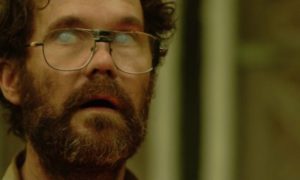
Back to Lauren. I really became fascinated with her. I said to Andrew, “What do you think about her?” And he said, “Oh! Oh, yeah. That could work.” So he ended up sending her the script but not saying anything about the role. He just said, “Hey, what do you think of this script?” She and her boyfriend at the time read it and really, really liked it. So Andrew said, “What do you think about playing the lead role?” And she was pretty pumped to do it. It was also her first lead.
PopHorror: Let’s talk about Dementer now. Jug Face and Dementer are two totally different films in almost all ways. Jug Face is a pretty much straight up creature feature, while Dementer is more abstract. It reminds me more of Rob Zombie’s Lords Of Salem with the cult aspect and the uncontrollable flashbacks and not knowing if what you’re seeing is really what’s going on. Did this idea come from another museum visit?
Chad Crawford Kinkle: (laughs) No! It would have been funny if it had. My sister actually plays Stephanie, the Down Syndrome girl in the movie. Even early on in film school, I always had this passionate idea to put her in a movie or something, but I never could figure out what kind of project would work. I could do some kind of sappy documentary to make people feel sorry for her. And I’ve seen different representations of people with Down Syndrome. Like in Harmony Korrine’s Gummo, there’s a Down Syndrome girl who plays a prostitute, and it really pissed me off. I felt like they had gone over the edge with what was appropriate. Even though I am probably not the best person to judge that because it is so personal to me because of my sister. But I had also seen other representations in TV shows of people who had Downs who were very high functioning, like that show Life Goes On. He’s very high functioning. Almost none of the people with Down Syndrome that I grew up around were like that. They were more like my sister, who has a very severe case. That always bugged me as well that that wasn’t completely accurate about most situations. So it just sat in the back of my mind forever.
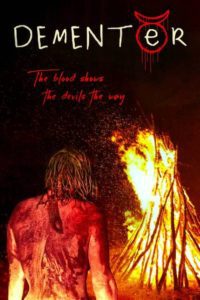
Then I was at Sundance one year, and I watched the movie The Tribe [2014], which is set in a school for the deaf. It’s teens, and they’re all just using sign language, and there’s no subtitles. But I was just so fascinated by the environment. I really love environments in general and the stories that come out of them. When I watched that, I had this thought, like, “Hang on… my sister’s world that she lives in… what about that? How could I make a horror movie with her and about that? What would that even be like?” The idea itself just had this energy, and it all just snowballed from there. Of course, I was scared to verbalize it for awhile. And then I started thinking about how I would even make a movie like that. Would it just be a documentary that I shaped into something different? That was my first idea. Just shoot for a month and follow my sister around and see what she does and then try to add a story around it. But I realized that that would be too expensive and too hard to do. I’m going to have to do a normally structured story.

But then I thought, because my sister is so severe of a case, getting her to do much is very hard (laughs). She needs 24 hour care: brush her teeth, get her dressed, make her food. So, I can’t make her the main character. There has to be some sort of device to get people into the story. So I thought, “What if there’s someone coming in to work as an aide—because the most prominent people in her life are the aides who take care of her—what if they were just this wandering person that comes in and is compelled to help people? But when she starts to help people, the devil shows up and goes after the person she’s trying to help.” Then there’s the stuff about her background that the audience doesn’t understand, and she doesn’t, either. She can’t remember it fully, which in the way it plays out, it shows you why. And I thought that that could be really cool.
So I wrote the script, and I remember when I finished the first draft, I got to the ending, and I was really uncomfortable with the way it ended. So I wrote three others to give it a more positive ending.
PopHorror: It definitely doesn’t have a positive ending.
Chad Crawford Kinkle: (laughs) No, it doesn’t! When I told Katie [Groshong], who plays the lead, the idea that I had, I asked her if she would do it, and she said she would. Then she read the final script, and she was like, “Chad! This ending is totally different!” (laughs)
After I wrote the first draft, I started thinking, “What does this movie mean to me? Where is this coming from?” With Jug Face, I realized where it was coming from. My wife and I had just had our daughter, and I realized that my life wasn’t my own anymore, just like Ada says in the movie. I had my daughter, so I couldn’t just go out and party all the time anymore. I had to take care of myself, and I had to take care of this other person. So, a part of me was having to be sacrificed. So I knew, when I was writing Jug Face, that those feelings were coming out in that.
But with this one, I was like, “Where in the world is this coming from?” One day, I was at yoga, and I wasn’t supposed to be thinking about anything, but of course, I was. And I realized—and this is going to sound really out there—that this movie is really a reaction to social media and how people become possessed by these ideas that they don’t understand. Like the character, Katie, she’s using these little random lines of dialogue, but she doesn’t really know what she’s talking about (laughs). Even though no one is going to get that from it.
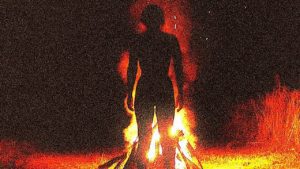
PopHorror: How was it, working with your sister? You mentioned it’s hard to get her to do things sometimes. Not to mention some of the other characters in the film who are mentally handicapped.
Chad Crawford Kinkle: When I wrote the script, I knew that every scene that had someone in it with a disability, that I may not be able to get what I want from that scene, or I wouldn’t be able to get it to happen exactly how I was picturing it in my head. So I knew that I just had to capture the essence of the scene and not worry too much about the particulars. So, that freed me up to experiment and just let whatever happened happen. And by doing that, a cool thing came out of it. Plus, I wrote it based on my sister’s patterns of behavior and things she’s always done her whole life: the words that she says, the reactions that she has. It would never have worked if I had said, “I need her to do this thing that she’s never done before.”
It was crazy in a way, for my sister particularly. Whenever I would have the camera on her, she would be laughing. She doesn’t speak much, but she would be imitating me with non-words, and you knew that she was talking about me or copying me bossing people around on the set.
(both laugh)
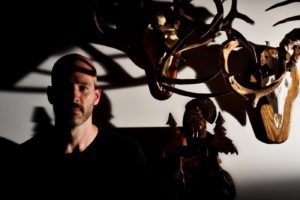
She would do that every time. So it would take at least ten minutes of her doing this before she would settle down, and then I could ask her to do something. I just had to keep the camera rolling.
Normally, with an actor, you can ask them to do something over and over again. That’s just how it is. You want to get variations of what’s happening to cut and to have options. But I realized very quickly that I could only ask them to do something once or maybe twice, or it was like I was being cruel. Particularly with their mobility. My sister and the two other clients who live in her house, their mobility is terrible. So, when they would walk from the van to the house, I could maybe ask them to do that one more time if something didn’t go right, but that was it. There’s a limit here of what I can ask. This is just a movie, you know?
And also, all of the environments they’re in are all wide. To make a movie, you have to shut down the environment to control it. For them, the clients at the center, that day is just a normal day for them. We just happen to be shooting at the same time as everyone else is working and going about their normal business. So that made it even more hectic.
I remember after we finished the first day of shooting, the DP [Jeff Wedding] and I were reviewing the dailies. I just looked over at him and said, “That was effing crazy!”
(Both laugh)
Chad Crawford Kinkle: It was crazy, but I loved it.
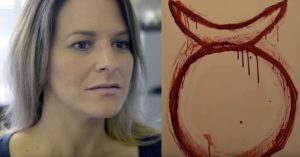
PopHorror: I love that you were able to incorporate your sister into your filmmaking. Some people might try to hide that aspect of their lives, but it’s so awesome that you not only share it but you made a movie about it. If you take out the horror elements, it’s a tribute of sorts to her.
Chad Crawford Kinkle: Thank you. Yeah, it’s very naturalistic. They’re in their elements. It was almost like a fake documentary, and then I had inserted a character into it. When you watch it, you realize that this main character shouldn’t even be there. She’s an outsider. Plus, Katie an actress—she’s an actress, Larry Fessenden [read the PopHorror interview with him here] is an actor, and the guy at the meat processor are the only trained actors—so I was mostly working with people who had no acting experience at all. They were just average people who worked there. So, I’m showing this naturalistic thing with my sister and the people working there, and then introducing an actor, and I’m following the motions of this actor in this real space made us feel like we were watching something we shouldn’t be watching.
PopHorror: So, I have to ask you about the cow heart. Was it real?
Chad Crawford Kinkle: It was real. Yeah.
PopHorror: I had no idea that they were that big! That thing was the size of my head.
Chad Crawford Kinkle: (laughs) I didn’t either! I’m actually a hunter as well. I’ve hunted my whole life. When I have a deer, I take it to a meat processor in my town—because, you know, this whole shoot happened in the town where I grew up in—that’s where my sister is. We shot all around that town, and I knew that meat processor. Normally, it’s the deer stuff. But he often does other animals as well. I just happened to mention, “Where am I supposed to get a cow heart?” And he says, “Oh! I’ll get you some. How many do you need?” (laughs) And I was like, “I don’t know… two?” They process beef there, too, so he could just save them for me.
PopHorror: Okay, time to pick your brain about your favorite horror movies. What would you say is your go-to subgenre when you’re looking for something new to watch?
Chad Crawford Kinkle: That’s interesting… I have a pretty wide range of things that I like, from something campy like Leprechaun or Ghoulies. I grew up on those types of movies in the ’80s. But to me, if I think about all of the things I’ve watched and scripts I’ve written, it’s always been a combination of Texas Chain Saw Massacre [1974] and Rosemary’s Baby [1968]. In my mind, those are the two worlds that I like to exist in at the same time. I also love Italian horror, so I love Argento’s stuff. Cronenberg is huge. My favorite filmmaker of all time—he’s not necessarily a horror filmmaker—is David Lynch. And I also like Ingmar Bergman, and I really like Tarkovsky and the movie, Stalker [1979]. Film-wise, I just jump all around. And within the horror genre, I do the same thing. But Cronenberg would be one of the biggest ones, and you could even consider some of David Lynch’s stuff to be horror.
PopHorror: Definitely horrible and not something I would want to experience.
Chad Crawford Kinkle: Right! Right. I never try to copy things from other movies, but sometimes I like to reference other films. There’s this shot in Jug Face where she’s coming back from the bedroom, and she’s walking down this dark hallway, and she almost disappears, and I called that my Lost Highway shot.
We want to thank Chad Crawford Kinkle for taking the time to chat with us. Make sure you keep your eyes peeled for Dementer, which releases on March 2, 2021.
Keep it tuned to PopHorror for all of your horror news, reviews, and interviews!
 PopHorror Let's Get Scared
PopHorror Let's Get Scared
